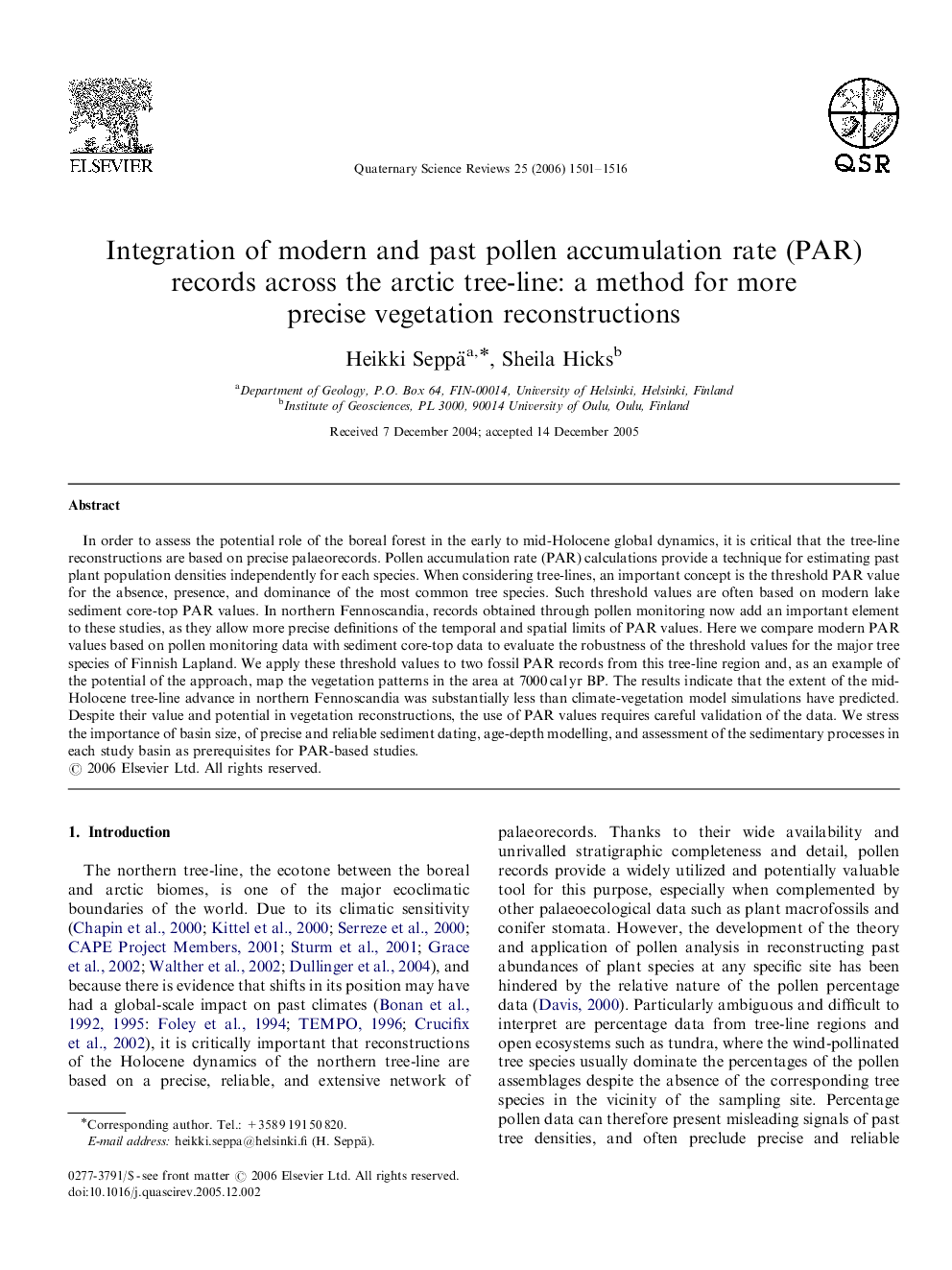| Article ID | Journal | Published Year | Pages | File Type |
|---|---|---|---|---|
| 4737547 | Quaternary Science Reviews | 2006 | 16 Pages |
In order to assess the potential role of the boreal forest in the early to mid-Holocene global dynamics, it is critical that the tree-line reconstructions are based on precise palaeorecords. Pollen accumulation rate (PAR) calculations provide a technique for estimating past plant population densities independently for each species. When considering tree-lines, an important concept is the threshold PAR value for the absence, presence, and dominance of the most common tree species. Such threshold values are often based on modern lake sediment core-top PAR values. In northern Fennoscandia, records obtained through pollen monitoring now add an important element to these studies, as they allow more precise definitions of the temporal and spatial limits of PAR values. Here we compare modern PAR values based on pollen monitoring data with sediment core-top data to evaluate the robustness of the threshold values for the major tree species of Finnish Lapland. We apply these threshold values to two fossil PAR records from this tree-line region and, as an example of the potential of the approach, map the vegetation patterns in the area at 7000 cal yr BP. The results indicate that the extent of the mid-Holocene tree-line advance in northern Fennoscandia was substantially less than climate-vegetation model simulations have predicted. Despite their value and potential in vegetation reconstructions, the use of PAR values requires careful validation of the data. We stress the importance of basin size, of precise and reliable sediment dating, age-depth modelling, and assessment of the sedimentary processes in each study basin as prerequisites for PAR-based studies.
